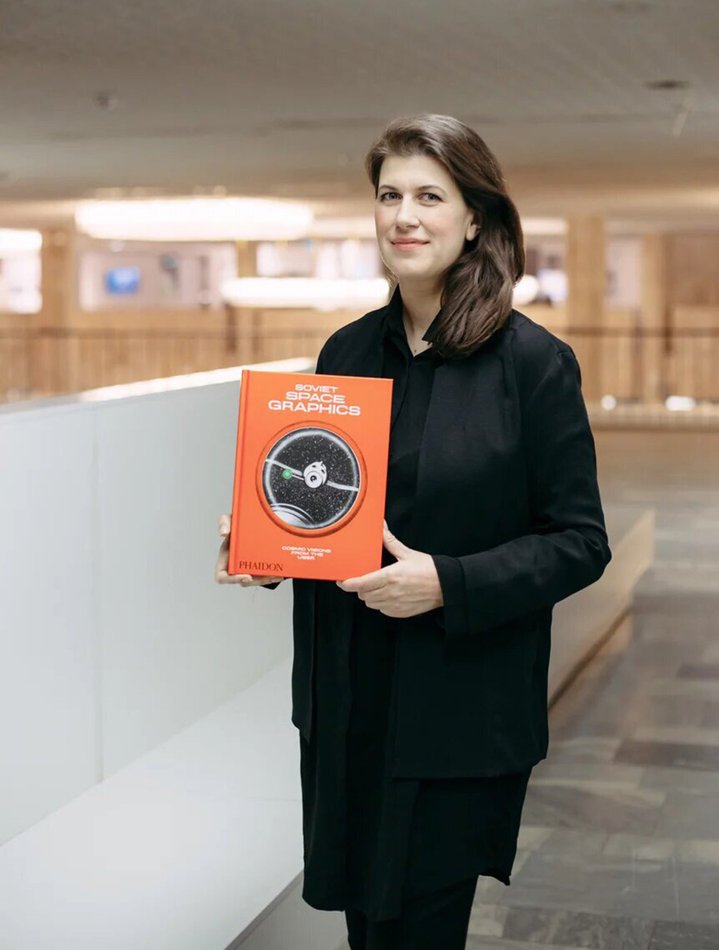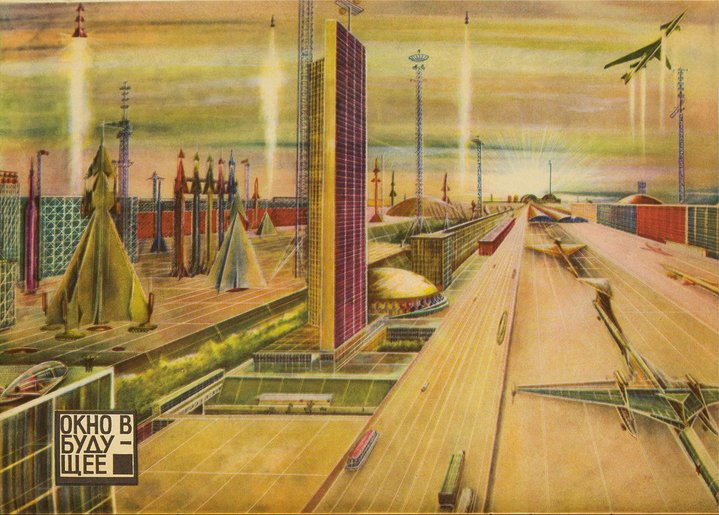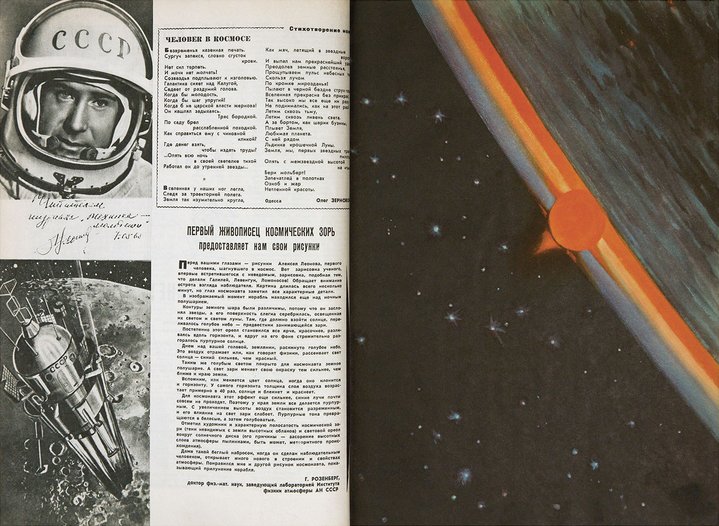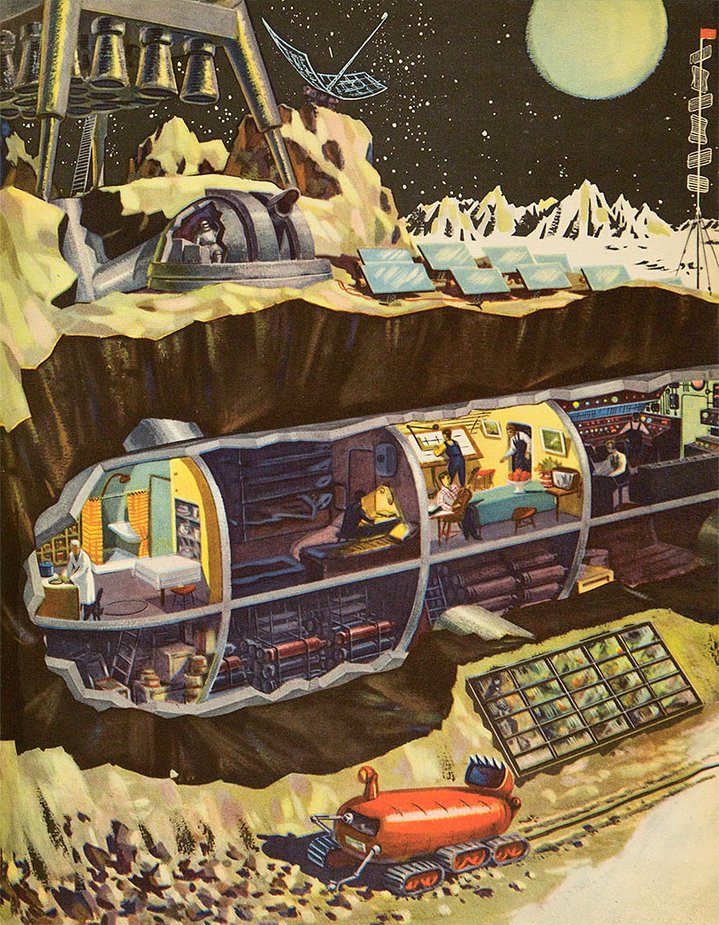Alexandra Sankova: bringing the moon down to earth

Outlook, issue 4, 1976, ‘Yuri Gagarin: Let’s Go!’, illustration by S. Alimov. Picture credit: The Moscow Design Museum (page 129)
An uplifting read for a lockdown era, a new book by design historian Alexandra Sankova lets English-speaking readers immerse themselves into Soviet teenagers’ dreams of space exploration, visualised in psychedelic colours by magazine illustrators of the time.
In October 1958, a year after Sputnik orbited Earth, the popular Soviet monthly ‘Tekhnika Molodezhi’ (“Technology for the Youth”) published an article intended to bring the moon closer — that is, make it more visible and understandable — to its young earthling readers. Titled ‘The Moon — Our Closest Neighbour’, the text details the moon’s mass, circumference, and path of orbit, while the illustrations reveal its craggy surface. In these pages, even the moon’s dark side seems to be within reach.
Of course, some 384,000 kilometres lie between Moscow and the moon, making Finland, for example, a much closer neighbour. But the sentiment is a perfect way to explain the effect that the space race had on Soviet science and mass culture after World War II. In those years, science’s obsession with space exploration entered the cultural sphere with new intensity through movies, art, design, and in particular, popular science and technical journals. These media not only enhanced the country’s curiosity about outer space, but also its technical ability to explore it. In other ways, however, the mediation of space also changed the Soviet Union’s vision itself, as if viewed anew from the expanse above.
If the sentiment of the time sought both inspiring wonder about space while also making it more knowable, how would one express that aesthetically? Thanks to the efforts of the Moscow Design Museum and its director, Alexandra Sankova, we now have a publication that begins to address this question through visual culture. ‘Soviet Space Graphics: Cosmic Visions from the USSR’, published by Phaidon in March 2020, contains over 250 covers and illustrations from popular science magazines of the 1920s through to the 1980s. An introduction by Sankova highlights the Soviet space programme and its engagement by artists and scientists in the pages of journals like ‘Znaniye — sila’ (“Knowledge is Power”), ‘Radio’, ‘Yunost’ (“Youth”) and ‘Zemlya i Vselennaya’ (“Earth and Universe”).
At first (if not second and third) glance, the book thrives on colourful eye appeal. Many illustrations, especially those from the 1960s onward, are fantastically hyper-saturated. The sky or the whirling motion of a machine might appear as a gradient of colours rather than in a naturalistic palette. In the process the ideal becomes a metaphor for the utopia of the Soviet Union itself.
Yet, Sankova also takes readers beyond the pleasure of the visible, writing that “if in the 1950s, artists were visualizing what technology would allow them to master the depths of the universe, only a decade later they were creating entire cosmic cities, orbital stations, residences, greenhouses...” Beyond these tendencies, however, the book does little to explore the relationship between the images and the rich history of Soviet graphic design and printing technology or the diverse art practices of the illustrators themselves. Instead, it stands ready to inspire further research along those lines.
If the book primarily reproduces illustrations, it nevertheless makes important revelations through its selection of materials. For example, in noting that Georgy Pokrovsky, an illustrator for Technology for the Youth, alsohad a PhD in engineering, Sankova gestures to the overlooked fact that scientific and artistic imaginations have historically often been one and the same. By including ample material from the 1920s and 30s, the book also emphasizes that outer space had a profound impact on the cultural imagination well before the launch of Sputnik.
Soviet Space Graphics
Cosmic Visions from the USSR
Published by Phaidon










